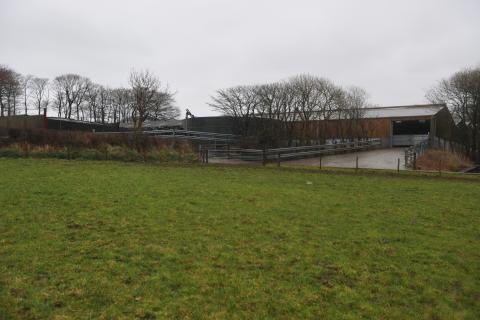Nutrient management is a challenge facing many farmers, and with regulations currently under review, now is an opportune time to consider the most cost effective ways to increase slurry storage and plan systems that will meet requirements in the future.
As farms have expanded and herd sizes increased, slurry storage has often not been updated to match. To comply with the Silage, Slurry and Agricultural Fuel Oil (SSAFO) storage regulations, slurry stores built since 1991 should have four months’ capacity, and Nitrate Vulnerable Zone (NVZ) regulations require a minimum of five months storage. To work out the storage requirements for your farm, add monthly livestock manure production, average monthly rainfall in your area and rainfall into slurry stores or from yards which drain into the slurry system, and the volume of any wash out water. Deduct any exports and separated solids and multiply by five to give the minimum storage volume needed for five months.
“Also, remember to allow 750mm free board for earth banked lagoons and 300mm for constructed stores from the top of the store to the top of what you’re containing in it. This often catches people out and why it’s so critical to get the calculations right,” Keith Owen, of ADAS Consulting told farmers at an event at Farming Connect Demonstration Site Moor Farm, Walwyn’s Castle, Haverfordwest.
The most popular options for slurry stores include earth banked lagoons, which cost between £8-£12 per cubic metre of storage; a lagoon lined with a clay or artificial liner; an above ground metal tank, which costs about £47 per cubic metre; or a shuttered concrete store, costing £59 per cubic metre.
“One downside of lagoons is that they have a bigger surface area so they take more rain. But an advantage is that you can expand them,” added Mr Owen.
Before making a significant capital investment in slurry storage, consider changes to reduce the amount of water collected that’s classed as slurry. Prevent clean water and run-off from roofs from entering the slurry system, cover the slurry store or open yards where livestock are fed and divert ‘lightly fouled’ material into a separate store.
“A lot of the time slurry isn’t the problem, it’s dirty water that causes the issue, so try to reduce volumes of water by changing management systems. It’s cheaper to reduce the amount of dirty water than it is to build a slurry store to contain everything. Also there’s the ongoing cost of pumping it out.”
Lightly fouled material includes parlour washings, run-off from yards with light livestock traffic that are regularly scraped or cleaned, and run-off from fully sheeted silage clamps that doesn’t contain any effluent. A minimum of two and a half days storage capacity is required for lightly fouled material, but it can be spread during closed periods when slurry spreading is prohibited under NVZ regulations.
Proposals are currently out to consultation to extend NVZs in Wales from 2.4% of land up to an area covering 8% of Welsh land, or even to designate the whole of Wales. As well as a minimum of five months slurry storage, farms within an NVZ cannot spread slurry during the closed period between October 15th and January 31st on grassland and between October 1st and January 31st on tillage. There are also restrictions on spreading manufactured nitrogen fertiliser and an upper limit of total nitrogen that can be spread on land. The consultation on NVZs in Wales ends on December 23rd. For more information visit https://consultations.gov.wales/consultations/nitrate-vulnerable-zones-…

